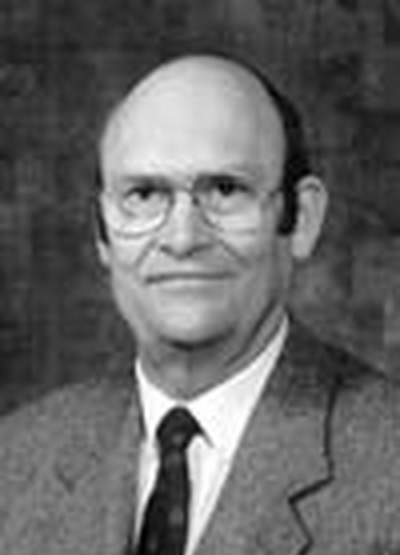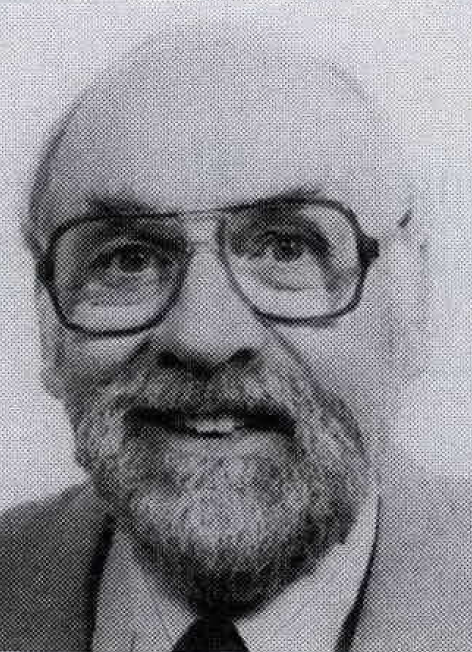The birthplace of computational electromagnetics in Canada – McGill University’s Computational Electromagnetics Laboratory (CompEM Lab) – cannot be discussed contemporaneously without acknowledging Peter Peet Silvester’s (1935-1996) legacy. In effect, the CompEM Lab today is a by-product of that legacy and the work of a large number of students, colleagues, and their successors. Née Computational Analysis and Design Laboratory, often shortened to CADLab, the CompEM Lab has undergone significant growth since its inception.
Silvester, awarded the PhD in Electrical Engineering at McGill in 1964, joined the department of Electrical Engineering as a faculty member shortly thereafter. While the CADLab proper did not exist by name, Silvester became recognized internationally as a pioneer in the simulation of electromagnetic fields, along with a growing group of graduate students. Zoltan J. Cendes, one of those students (of Ansoft HFSS fame) remembers “discover[ing] groundbreaking research being performed by Professor Peter Silvester in the Electrical Engineering Department at McGill. Professor Silvester’s work was cutting edge. I switched departments to Electrical Engineering and never looked back” [1].
It was Silvester’s growing reputation that attracted burgeoning young talent and that led to what would eventually become known as the CADLab. In 1979, Silvester was joined by newly appointed assistant professor David A. Lowther. At the time, the Lab consisted of a modest office in room 707 on the seventh floor of the McConnell Engineering building which housed two Hazeltine 1500 terminals. The terminals allowed Silvester and Lowther, along with graduate students, to run programs on the school’s IBM mainframe using the McGill University System for Interactive Computing (MUSIC) operating system (itself also on a trajectory towards international renown as MUSIC/SP).
To accommodate this growth, the CADLab moved to the fourth floor of the MacDonald-Harrington building. This marked the first dedicated space for students, of which there were both graduate and undergraduate. Steve J. McFee, one of those undergraduates (and later graduate student and professor with the CompEM Lab), recalls there being three rooms: one containing a large library table, the second with two to five Hazeltine terminals connected to a PDP-11 minicomputer, and the third a sort of lounge. Then, undergraduates would gain access to the lab through summer jobs; coding for Silvester and Lowther.
The Lab moved to its final location in the mid-1980s occupying a portion of the sixth floor of the McConnell Engineering building when Cendes (1980) and Jon P. Webb (1982) joined as assistant professors. Today’s PhD graduate student room was a High Frequency Lab (coincidentally the lab in which McFee met Dennis D. Giannacopoulos, then student, now professor with the CompEM Lab). The Master’s student room was initially empty, and eventually housed a set of salvaged library carrels at which undergraduates and Master’s students could study. The Electric Machine Lab (as of 2014) was used as a seminar room where weekly lunch presentations were held. The Breast Cancer Detection Lab (again, as of 2014, helmed by Milica Popović, latest professor to join the CompEM Lab) was the PhD graduate student room. Finally, the PDP-11 was housed in a small closet off of the Master’s room (which has affectionately become known as “Adrian’s room” over the last decade, although it recently has been converted back to a server room). In the late 1990s, the lab had roughly 32 graduate students and was reshuffled to its current day setup (with the Machine Lab as an additional room for undergraduate and Master’s students and the Breast Cancer Detection Lab as a conference room and lounge).
Today, the lab counts 5 professors and a number of students difficult to keep track of. The very nature of a research laboratory is one of constant change. As students come and go, so too do professors (although at a much slower rate), and so ultimately, it is their work that remains. Indeed, what would the history of a computational electromagnetics laboratory be without the computational electromagnetics! The breadth of Silvester’s own work can be seen in [2] which contains a complete bibliography, as well as a review of his oeuvre. In particular, we mention the seminal text Finite Elements for Electrical Engineers by Silvester and Ronald L. Ferrari [3] which is the first textbook (1983) dealing specifically with the application of the finite element method to problems in electrical engineering. For work relating to the computer-aided design of magnetic devices, we draw attention to the first textbook on the subject – Computer-Aided Design in Magnetics – by Lowther and Silvester [4]. We also mention the lab’s focus throughout the 1990s on p-adaptive finite element methods. To highlight but one such contribution, we refer readers to Webb’s influential paper on hierarchal vector basis functions [5]. For more specific details relating to each professor’s current research areas, please see their respective webpages.
Compiled by Ryan Galagusz
References
[1] Z. Cendes, in an interview recorded by S. R. C. Hicks, February 2014. Newsletter of the Center for Ethics and Entrepreneurship, Rockford University. Online . (April 2015).
[2] R. Ferrari. “The Finite-Element Method, Part 2: P. P. Silvester, an Innovator in Electromagnetic Numerical Modeling,” in IEEE Antennas and Propagation Magazine, Vol. 49, No. 3, pp. 216-234, June 2007.
[3] P. P. Silvester, R. Ferrari. Finite Elements for Electrical Engineers, 3rd ed. Cambridge University Press. September 1996.
[4] D. A. Lowther, P. P. Silvester. Computer-Aided Design in Magnetics. Springer-Verlag New York. 1986.
[5] J. P. Webb. “Hierarchal vector basis functions of arbitrary order for triangular and tetrahedral finite elements,” in IEEE Transactions on Antennas and Propagation, Vol. 47, No. 8, pp. 1244-1253, 1999.

Prof. Peter P. Silvester
[Web Online]

Prof. Ronald L. Ferrari [2]

CAD in Magnetics [4]